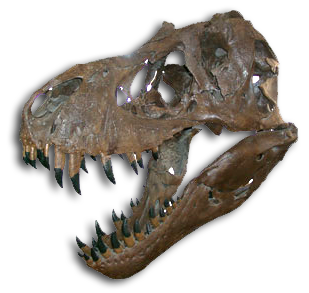Item Number
316
Type
image
Description
Ammonite in Matrix
Size
16x15
Age
Mesozoic, Jurassic
SciId
Asteroceras obtusum
Status
in inventory
Display/Storage
Display
Building
Zuhl Museum
Original Site
England
Date Acquired
1990
Gallery/Room\Floor
History of Life Gallery
Notes
Acquired from the Lower Lias formation in Charmouth, Dorset, England; E19. This specimen is ~190 million years old. Ammonites, related to the modern-day nautilus, are from a group of extinct marine mollusks in the subclass Ammonoidea. These predatory sea creatures maintained a diet of shrimp, starfish, and other small marine animals. In modern times ammonite fossils are used as index fossils because of their wide geographic distribution, well-defined period of existence in Earth’s history, and their ability to be easily identified at the species level. Index fossils are used to help determine the relative age of rock layers.
Preview

Description
Acquired from the Lower Lias formation in Charmouth, Dorset, England; E19. This specimen is ~190 million years old. Ammonites, related to the modern-day nautilus, are from a group of extinct marine mollusks in the subclass Ammonoidea. These predatory sea creatures maintained a diet of shrimp, starfish, and other small marine animals. In modern times ammonite fossils are used as index fossils because of their wide geographic distribution, well-defined period of existence in Earth’s history, and their ability to be easily identified at the species level. Index fossils are used to help determine the relative age of rock layers. 11x7
Keywords
Ammonite in Matrix Acquired from the Lower Lias formation in Charmouth, Dorset, England; E19. This specimen is ~190 million years old. Ammonites, related to the modern-day nautilus, are from a group of extinct marine mollusks in the subclass Ammonoidea. These predatory sea creatures maintained a diet of shrimp, starfish, and other small marine animals. In modern times ammonite fossils are used as index fossils because of their wide geographic distribution, well-defined period of existence in Earth’s history, and their ability to be easily identified at the species level. Index fossils are used to help determine the relative age of rock layers. 1990 Mesozoic, Jurassic Fossil
Keywords
Ammonite in Matrix Acquired from the Lower Lias formation in Charmouth, Dorset, England; E19. This specimen is ~190 million years old. Ammonites, related to the modern-day nautilus, are from a group of extinct marine mollusks in the subclass Ammonoidea. These predatory sea creatures maintained a diet of shrimp, starfish, and other small marine animals. In modern times ammonite fossils are used as index fossils because of their wide geographic distribution, well-defined period of existence in Earth’s history, and their ability to be easily identified at the species level. Index fossils are used to help determine the relative age of rock layers. 1990 Mesozoic, Jurassic Fossil


